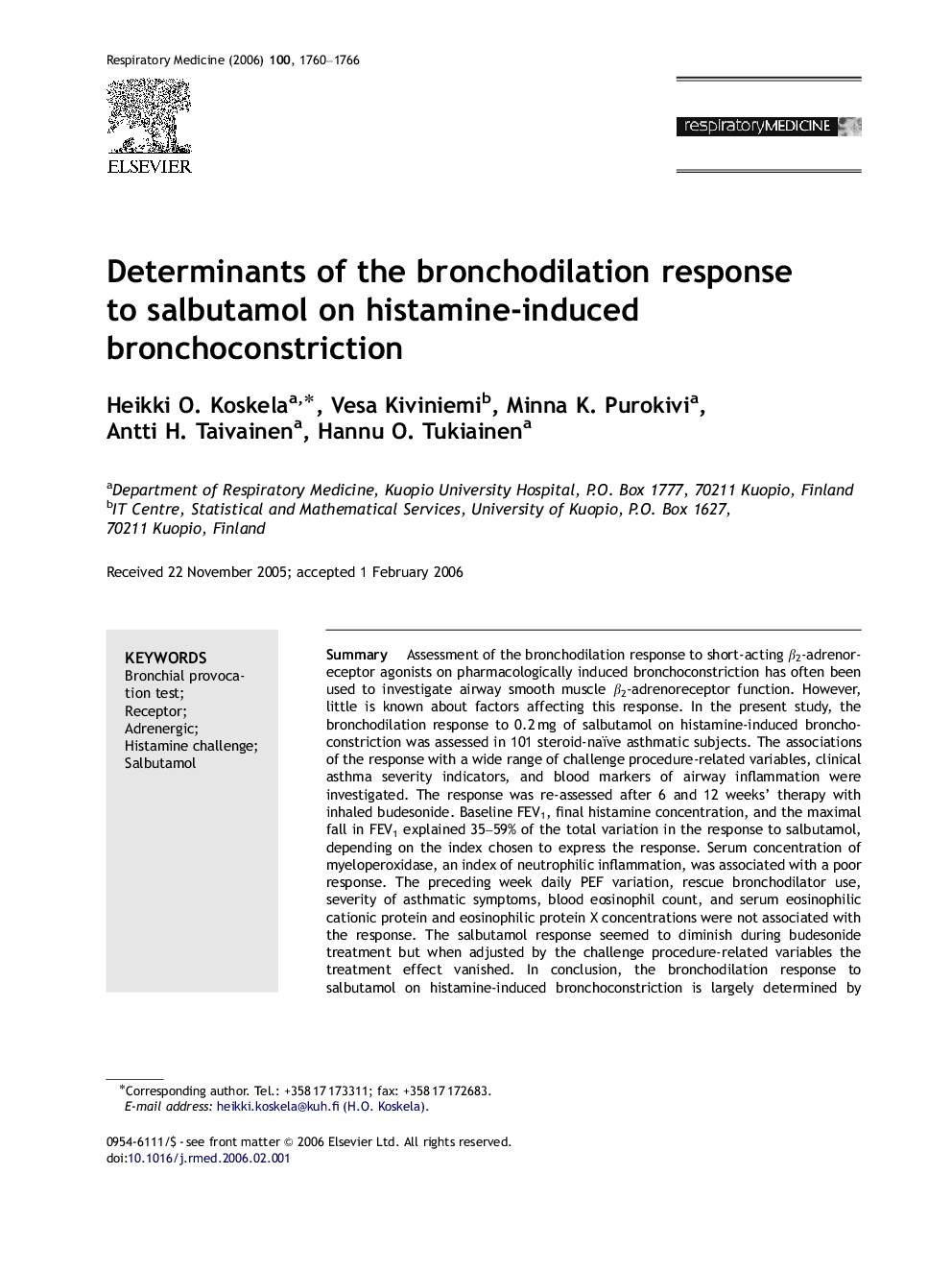| Article ID | Journal | Published Year | Pages | File Type |
|---|---|---|---|---|
| 4212155 | Respiratory Medicine | 2006 | 7 Pages |
SummaryAssessment of the bronchodilation response to short-acting β2-adrenoreceptor agonists on pharmacologically induced bronchoconstriction has often been used to investigate airway smooth muscle β2-adrenoreceptor function. However, little is known about factors affecting this response. In the present study, the bronchodilation response to 0.2 mg of salbutamol on histamine-induced bronchoconstriction was assessed in 101 steroid-naïve asthmatic subjects. The associations of the response with a wide range of challenge procedure-related variables, clinical asthma severity indicators, and blood markers of airway inflammation were investigated. The response was re-assessed after 6 and 12 weeks’ therapy with inhaled budesonide. Baseline FEV1, final histamine concentration, and the maximal fall in FEV1 explained 35–59% of the total variation in the response to salbutamol, depending on the index chosen to express the response. Serum concentration of myeloperoxidase, an index of neutrophilic inflammation, was associated with a poor response. The preceding week daily PEF variation, rescue bronchodilator use, severity of asthmatic symptoms, blood eosinophil count, and serum eosinophilic cationic protein and eosinophilic protein X concentrations were not associated with the response. The salbutamol response seemed to diminish during budesonide treatment but when adjusted by the challenge procedure-related variables the treatment effect vanished. In conclusion, the bronchodilation response to salbutamol on histamine-induced bronchoconstriction is largely determined by challenge procedure-related variables. It seems to be unrelated to the clinical severity of asthma and is not affected by treatment with inhaled corticosteroids. Neutrophilic airway inflammation may be associated with a poor response.
